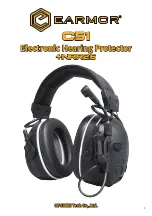
76 |
Wiring |
GN70/MX610/MX612 Operator and Installation Manual
CAN bus
The CAN bus is based on the well known SimNet plug & play concept and on the NMEA 2000
(N2K) SAE J1939 protocol. Hard wiring is based on standard NMEA 2000 cables with Micro-C
type connectors and joiners.
The bus consists of a linear backbone using drop cables and Micro-C T-joiners for connecting
NMEA 2000 and SimNet devices.
The bus has a maximum cable length of 150 m (500 ft), and a drop cable has a maximum
length of 6 m (20 ft).
In a default GN70/MX61x system the CAN bus backbone expands from the MX610JB, which
supplies power to the backbone. There will always be a female connector in the expanding
end of the backbone cables.
T
T
1
2
5
3
4
6
GN70/MX61x with MX610 junction box wiring diagram
No.
Description
1
MX610JB (or MX612JB) junction box with built-in CAN bus terminator and network
power supply
2
0,6 m (2 ft) pigtail cable, female connector
3
Micro-C T-joiner
4
CAN bus drop cable, with connectors in each end (female - male) - (6 meter max)
5
CAN bus Backbone, various lengths available. Connectors in each end
6
Optional GS70 smart antenna
T
Terminator, 120 Ohm, male
¼
Note:
If cables are not supplied by Simrad, ensure that they meet NMEA 2000/IEC61162-1/2
requirements.
Planning and installing a network backbone
• Plan the network carefully
-
It is recommended to create a diagram of the network prior to starting the installation
• Run the backbone between the locations of all CAN devices you want to install
-
It must be less than 6 m (20 ft) cable run from a device to the backbone
• Consider the load/current draw from the devices
For details on network cables and components, refer to our websites:
www.navico.com/commercial and www.simrad-yachting.com
FEMALE
FEMALE
MALE
Содержание GN70
Страница 1: ...ENGLISH GN70 MX610 MX612 Operator and Installation Manual navico com commercial...
Страница 2: ......
Страница 99: ......
Страница 100: ...988 10372 003 N2584...
















































